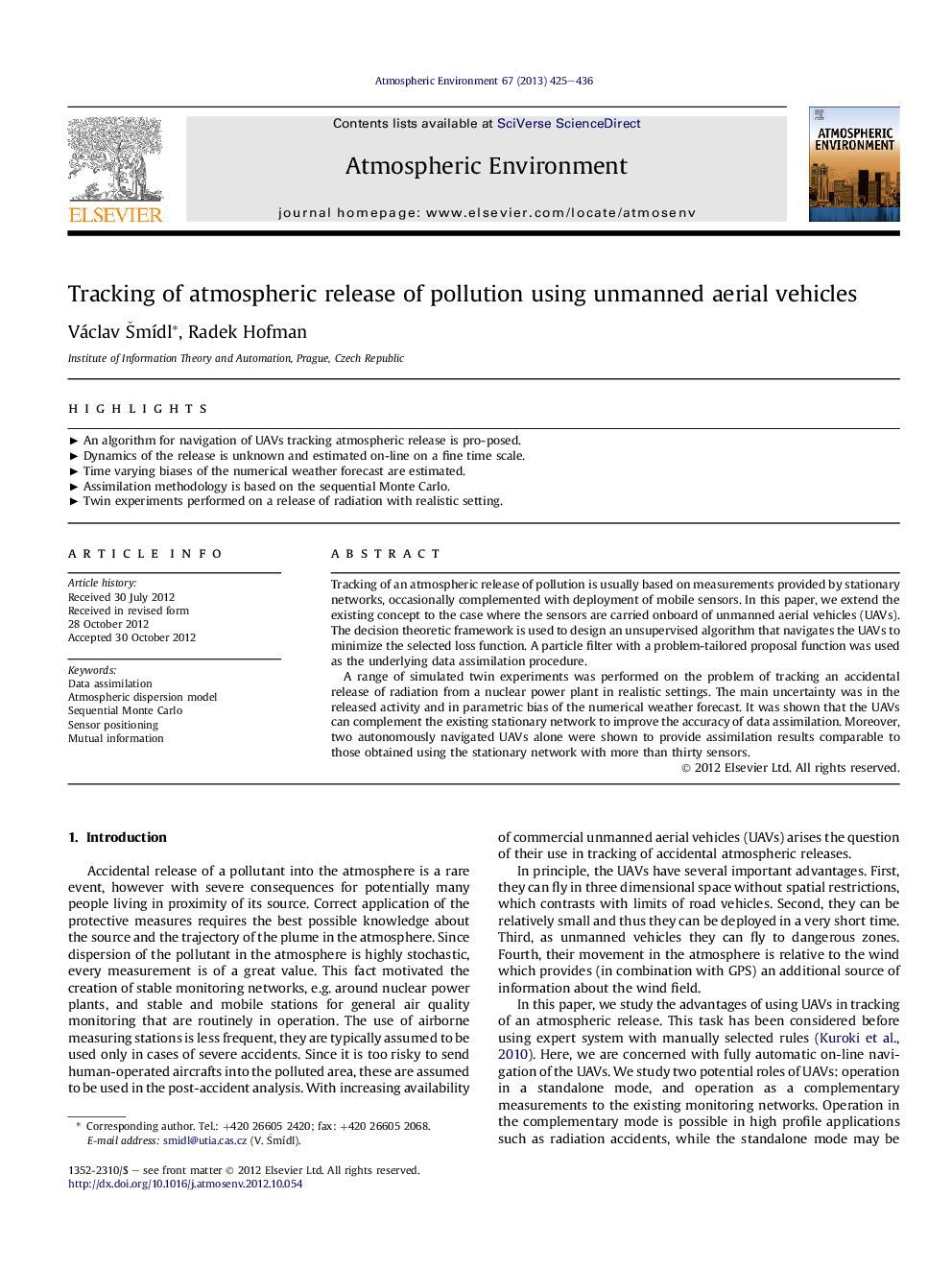| Article ID | Journal | Published Year | Pages | File Type |
|---|---|---|---|---|
| 4438510 | Atmospheric Environment | 2013 | 12 Pages |
Tracking of an atmospheric release of pollution is usually based on measurements provided by stationary networks, occasionally complemented with deployment of mobile sensors. In this paper, we extend the existing concept to the case where the sensors are carried onboard of unmanned aerial vehicles (UAVs). The decision theoretic framework is used to design an unsupervised algorithm that navigates the UAVs to minimize the selected loss function. A particle filter with a problem-tailored proposal function was used as the underlying data assimilation procedure.A range of simulated twin experiments was performed on the problem of tracking an accidental release of radiation from a nuclear power plant in realistic settings. The main uncertainty was in the released activity and in parametric bias of the numerical weather forecast. It was shown that the UAVs can complement the existing stationary network to improve the accuracy of data assimilation. Moreover, two autonomously navigated UAVs alone were shown to provide assimilation results comparable to those obtained using the stationary network with more than thirty sensors.
► An algorithm for navigation of UAVs tracking atmospheric release is pro-posed. ► Dynamics of the release is unknown and estimated on-line on a fine time scale. ► Time varying biases of the numerical weather forecast are estimated. ► Assimilation methodology is based on the sequential Monte Carlo. ► Twin experiments performed on a release of radiation with realistic setting.
